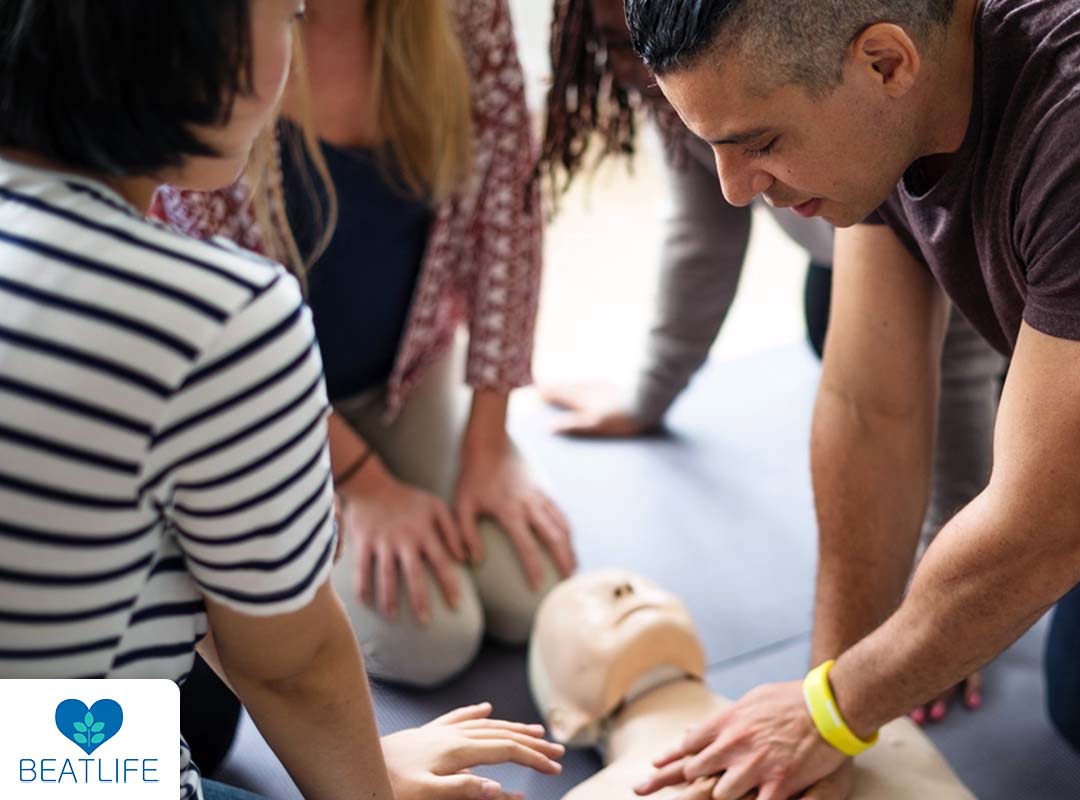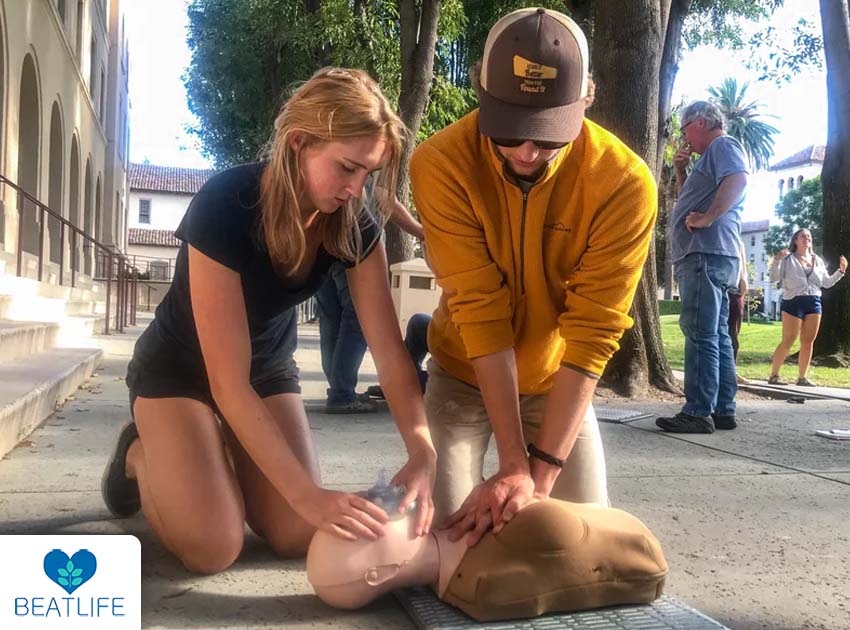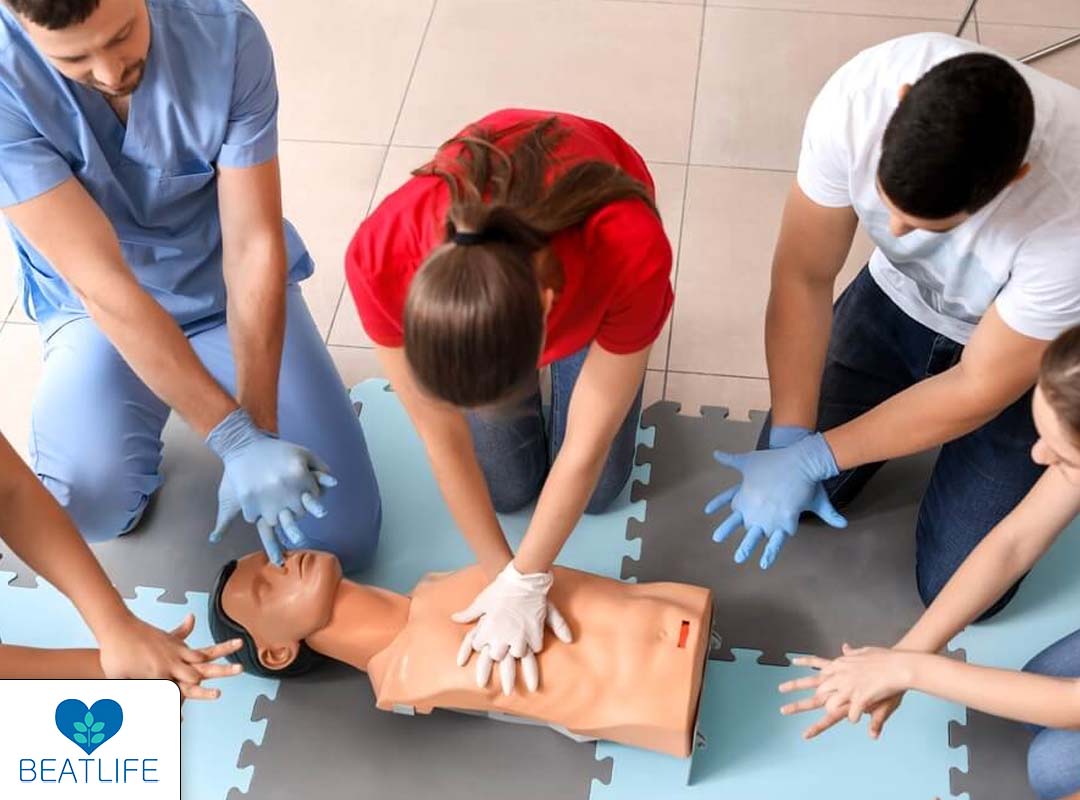The importance of strong, effective team dynamics in CPR, where every second counts, cannot be neglected. When several rescuers work together to save a life, their capacity to cooperate, communicate easily, and remain composed under pressure becomes the key to success. This article, which is focused on the effective team dynamics in CPR, launches into a thorough investigation of how these team members’ coordinated activities and cooperative efforts can have a big impact on the lives of patients.
This analysis reveals the layers of teamwork and communication, which are crucial in deciding the success of life-saving interventions, as we go deeper into the complexities of CPR. We examine the roles played by each team member, analyze communication tactics, analyze leadership structures, and investigate the mechanisms of flexibility that support productive team dynamics. Our goal is to clarify how effective team dynamics in CPR have a significant impact on how people respond to cardiac and respiratory emergencies.
Contents
Team dynamics
First and foremost, the function of a committed team leader occupies a position of utmost significance. This chosen person receives the leadership role, coordinating role changes, gathering crucial information, and continuously maintaining an all-seeing perspective of the developing resuscitative scenario. It is noteworthy that nurses with the necessary training can effectively perform the leadership function without needing the qualifications of a specialist. The specialist may now direct their attention to making urgent medical decisions and participating in effective client dialogue without being distracted by the complex details of CPR management, thanks to this delegation.
Additionally, the fundamentals of role distribution within the CPR team are essential and irreplaceable. Chest compressors, experts in airways and ventilation, stewards of supplies and medications, diligent timekeepers, and watchful team leaders are all traditional components of CPR teams. Each member of the CPR team must demonstrate complete understanding and flawless performance of their assigned function. In conclusion, the model of a meticulously organized CPR team, strengthened by clearly defined roles and stewarded by an astute leader, serves as the cornerstone for optimizing resuscitative outcomes, ensuring accuracy, and facilitating the swift execution of the multifaceted resuscitation process.

Communication
The key to effective team dynamics in CPR is effective communication, which acts as the center point for coordinating the complex procedure of resuscitation efforts. The capacity to provide real-time information is crucial in the high-stress setting of a medical emergency. The team’s activities and decisions must be guided by timely communication of critical updates regarding the patient’s status. This real-time information sharing also includes role definition to make sure that everyone on the team is aware of their roles, reduce confusion, and improve coordination.
Closed-loop communication is a methodical strategy that improves responsibility and clarity. It entails a sender, the receiver, and understanding confirmation. This procedure guarantees the precise transmission of crucial information, such as instructions for administering medications, while avoiding errors. In CPR teams, where doctors, nurses, and other professionals must collaborate fluidly, effective communication also promotes flexibility and multidisciplinary cooperation. Team members should feel free to share their opinions or make suggestions, promoting an environment of open dialogue that can result in important interventions and better patient care.
Effective team dynamics in CPR also include dealings with the patient’s family. Healthcare professionals must handle emotionally sensitive circumstances with sensitivity and understanding, giving families regular information on the patient’s condition and attending to their worries. In conclusion, effective communication in CPR team dynamics is more than just a skill; it’s a lifeline that ensures synchronization, role clarity, error reduction, adaptability, and compassionate family communication, all of which work in concert to increase the likelihood of a successful outcome in life-or-death medical situations.

Things To Avoid
Insufficient Communication: Effective team dynamics in CPR depend heavily on timely and clear communication. Confusion and chaos can result from failing to transmit crucial information, such as alterations in the patient’s health, activities taken, or rising concerns. Misunderstandings of responsibilities or directions might cause delays or mistakes in resuscitative efforts. CPR teams must, therefore, avoid any kind of communication breakdown. This risk can be reduced by promoting open channels of communication, utilizing consistent vocabulary, and identifying a team member as a committed communicator.
Ambiguity in roles might impede the smooth operation of CPR procedures. Ambiguity in roles can affect individual duties and responsibilities. Each team member must be informed of and ready to fulfill their specific responsibilities. Roles may not be clearly defined, leading to overlapped actions or the neglect of important responsibilities. To solve this problem, CPR teams should create distinct roles for each team member and do regular drills to make sure everyone is aware of their tasks. Additionally, promoting a climate of respect and collaboration amongst individuals might aid in preventing disputes brought on by misinterpretations of roles.

Effective Team Dynamics in CPR with CPRmeter
Effective team dynamics are essential for improving patient outcomes during CPR, especially when using the CPRmeter. It incorporates seamless communication between medical professionals and real-time feedback from cutting-edge tools like the CPRmeter. Team members can make judgments based on the device’s immediate data on chest compressions, breathing, and perfusion. One team member would concentrate on compressions, while others might take care of airways, defibrillation, or medicines. As they communicate CPR meter data, coordinate efforts, and improve CPR quality, communication is essential. The likelihood of a successful resuscitation is increased by this cooperative approach, which is aided by real-time feedback and communication. This emphasizes the significance of instruments like the CPRmeter that are produced in the BEATLIFE company in fostering effective team relations during CPR.
Factors That Contribute to Team Dynamics
effective team dynamics in CPR are influenced by a number of factors, including:
- Clear Roles and Responsibilities: By assigning particular roles, you can make sure that everyone on your team is aware of their responsibilities, which will help with communication and coordination.
- Effective communication is essential for sharing information, giving updates, and coming to choices quickly.
- Leadership: A chosen leader aids in maintaining concentration, assigning duties, and directing the team’s actions to ensure a coordinated effort.
- Training and Competence: Team members’ CPR skills should be up to par, which will improve their capacity to collaborate effectively.
- Flexibility and adaptability enable the team to react to changing conditions and improve their response.
- Psychological Safety: Fostering a culture where team members feel comfortable raising issues or making suggestions encourages trust and cooperation.

